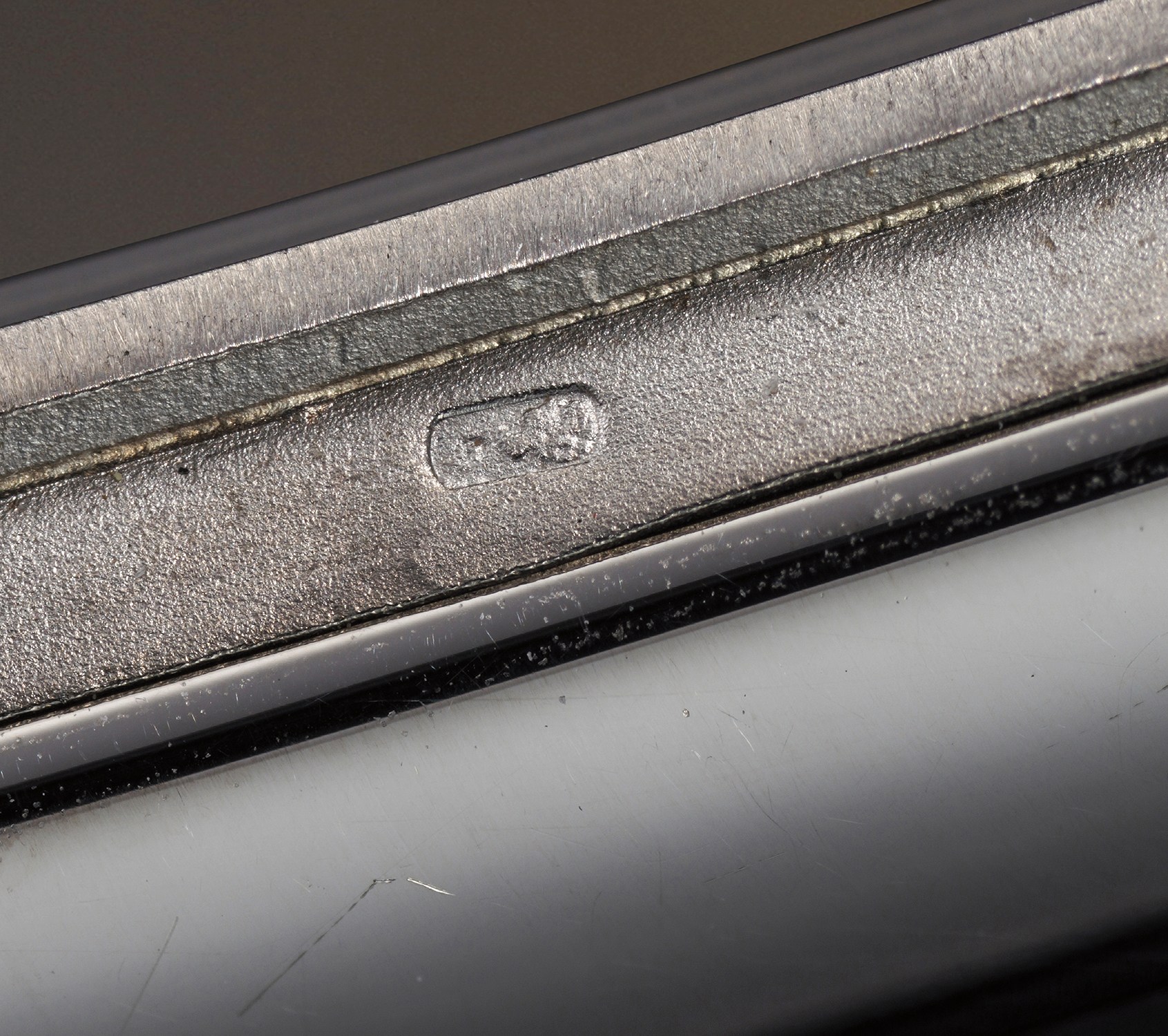





21Σ
Patek Philippe
Ref. 3424
An extremely rare and possibly unique white gold asymmetrical wristwatch, designed by Gilbert Albert
Full-Cataloguing
The present watch belongs to the famous “Asymétrie” collection of asymmetrical timepieces. While some of Albert’s modern designs never went beyond the prototype stage due to the uncertainty of their commercial success, the reference 3424 was produced in an extremely limited number. Henri Stern, then chairman of Patek Philippe, was seduced by the case design and approved its manufacture. According to our research only a handful of the present reference in white gold have appeared in public, however each were fitted with dials featuring black sector lines. The present watch is the only known example in white gold to feature black “baton” indexes. Almost 60 years after its creation, reference 3424 looks as modern and avant-garde as when it was originally launched. This iconic watch will surely appeal to any collector of unconventional watches, as well as fans of contemporary art and design. What furthermore sets this timepiece apart is its extraordinary state of preservation. A crisp and virtually untouched hallmark is visible between the lugs, and the case displays bold and crisp finishes. Even the white gold vintage Patek Philippe AW buckle stamped PPCo is a rarity.
The present watch was formerly the property of celebrated American architectural photographer and magazine publisher Walter G. Ashworth. A lover of motorcycles, of design and timepieces, he started collecting in the mid-1970s. The present lot was originally offered for sale at Sotheby's New York on June 20, 2000 when Mr. Ashworth offered part of his collection for sale, a collection of varied brands and styles but with one common denominator: impeccable condition.
Patek Philippe
Swiss | 1839Since its founding in 1839, this famous Geneva-based firm has been surprising its clientele with superbly crafted timepieces fitted with watchmaking's most prestigious complications. Traditional and conservative designs are found across Patek Philippe's watches made throughout their history — the utmost in understated elegance.
Well-known for the Graves Supercomplication — a highly complicated pocket watch that was the world’s most complicated watch for 50 years — this family-owned brand has earned a reputation of excellence around the world. Patek's complicated vintage watches hold the highest number of world records for results achieved at auction compared with any other brand. For collectors, key models include the reference 1518, the world's first serially produced perpetual calendar chronograph, and its successor, the reference 2499. Other famous models include perpetual calendars such as the ref. 1526, ref. 3448 and 3450, chronographs such as the reference 130, 530 and 1463, as well as reference 1436 and 1563 split seconds chronographs. Patek is also well-known for their classically styled, time-only "Calatrava" dress watches, and the "Nautilus," an iconic luxury sports watch first introduced in 1976 as the reference 3700 that is still in production today.